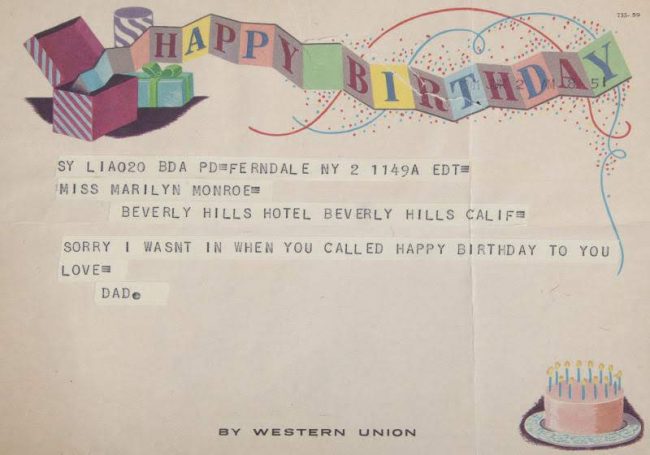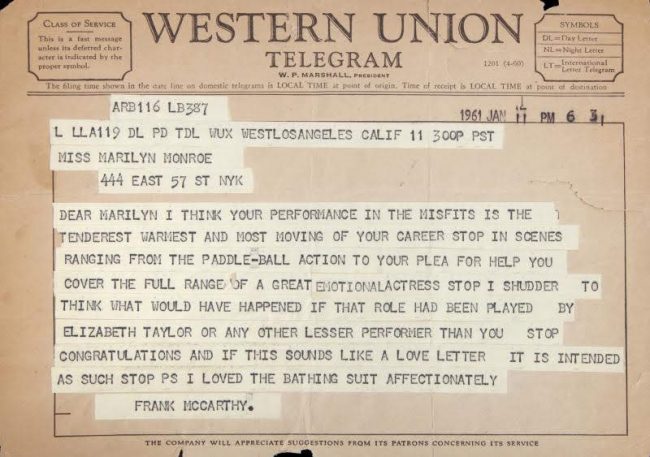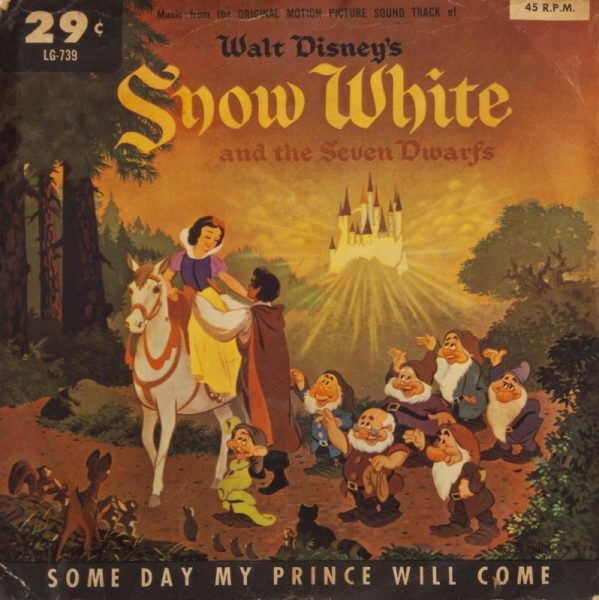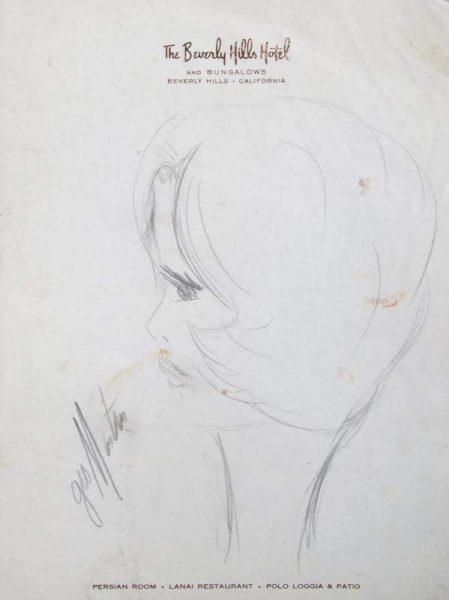
Goodman Basil Espy III, M.D. was “a true Southern gentleman.” He began collecting memorabilia for his beloved Georgia Tech, and sports in general. He was also a Marilyn Monroe fan, and his collection – which includes original photos and important documents plus key fashion items – enables us to review her life in a unique way. One of the auction’s four catalogues is devoted solely to Marilyn (you can order the entire set for $150 plus shipping here.)
Marilyn Southern Gentleman’s Collection will go under the hammer at Julien’s Auctions next Thursday, November 14. In the first of several posts, I look at items relating to Marilyn’s childhood and family background. (You can read all posts about this sale here.)
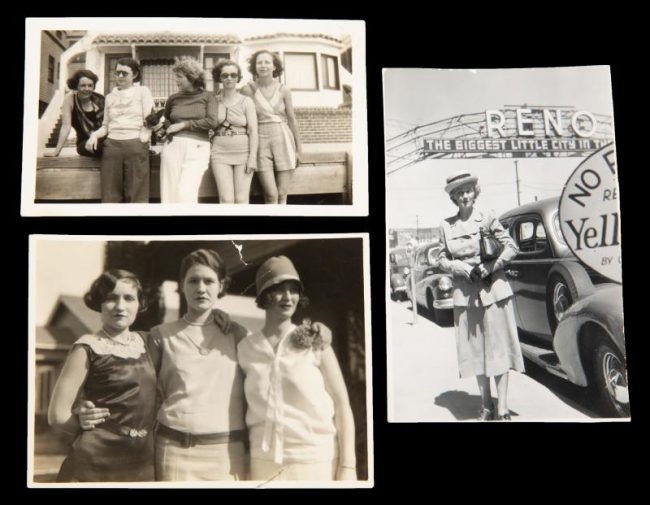
“An original print with a semi-gloss finish, depicting five young women in the 1920s standing in front of a Spanish-style building, Norma Jeane’s penciled annotation on the verso reading ‘Mother, second from End on Right / with her girl friends;’ also included are two other snapshots: another 1920s-era original print with a glossy finish, depicting Gladys Baker and two girlfriends, and a 1940s-era original print with a glossy finish, depicting a middle-aged Baker standing on a street in Reno, Nevada.” [Marilyn would later film The Misfits in Reno.]
SOLD for $768
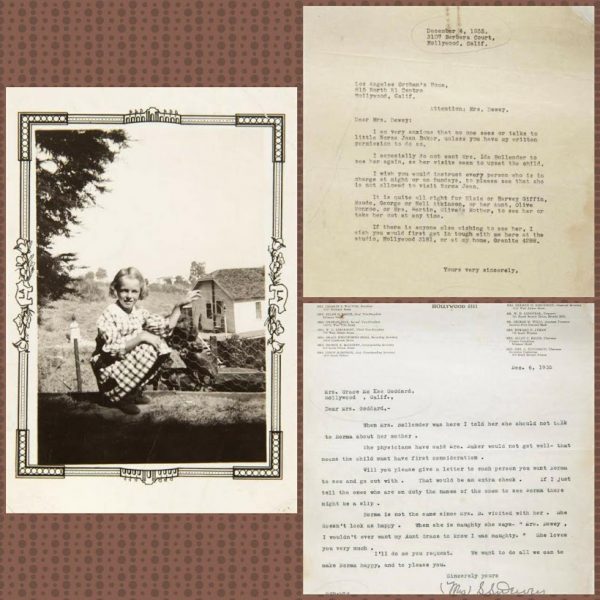
“An original childhood snapshot with a glossy finish, depicting a six or seven year-old Norma Jeane crouching outside of someone’s house in rural-looking 1930s Los Angeles, a pre-printed decorative black border has an Olympic theme showing images of the Coliseum plus two bears displaying the initials ‘LA,’ thus seeming to date the photograph to 1932 or thereabouts. And sold separately, a set of two letters; the first a single page, now yellowed with age, typed, dated ‘December 4, 1935,’ sent to ‘Mrs. Dewey’ of the Los Angeles Orphans Home (later known as Hollygrove) by Grace Goddard, outlining how Goddard didn’t want Ida Bolender to see the 9 year-old Norma Jeane anymore ‘as her visits seem to upset the child,’ though Goddard does allow that many others can visit including ‘Elsie or Harvey Giffin, / Maude, George or Nell Atkinson, or her Aunt, Olive / Monroe, or Mrs. Martin, Olive’s Mother’ but poor Ida was banned; the second is a single page of letterhead from the Los Angeles Orphans Home Society, typed, dated ‘Dec. 6, 1935,’ Mrs. Dewey’s response to Goddard, reading in part ‘I’ll do as you request. We want to do all we can to / make Norma happy, and to please you’ — interesting documents illustrating some of the early childhood strife Norma Jeane went through.”
Photo SOLD for $2,187.50; letters SOLD for $2,812.50
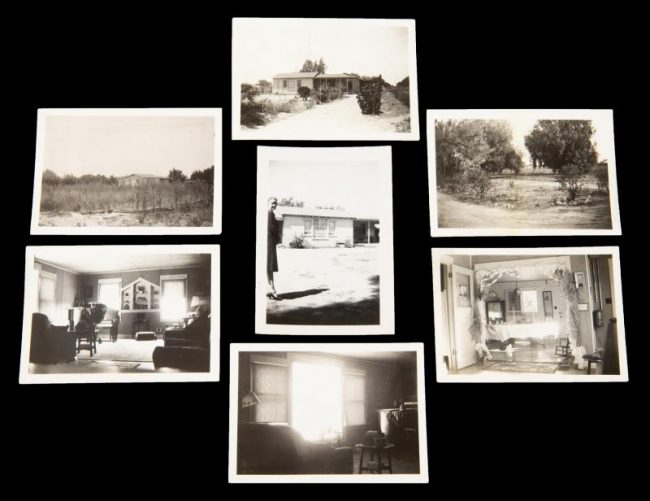
“A group of seven though only one is annotated, original prints with a glossy finish, taken circa 1942-1944, four show a small house at 6707 Odessa Avenue in Van Nuys, CA, and three show its interior; one has Norma Jeane’s penciled annotation on the verso reading ‘6707 Odessa Ave / Van Nuys, Calif. / Where I lived when I first / ment [sic] Jimmy’ [Dougherty, her first husband]. Interestingly, this house was owned by Ana Lower, the paternal aunt of Grace Goddard, Gladys Baker’s best friend and on-and-off guardian of the child Norma Jeane. Grace seemed to use this house of her aunt’s as a temporary crash pad from time to time, such as in the early 1940s when she moved there with her third husband, ‘Doc’ Goddard, his children (including Eleanor ‘Bebe’ Goddard), and a teen-aged Norma Jeane Baker.”
SOLD for $1,000
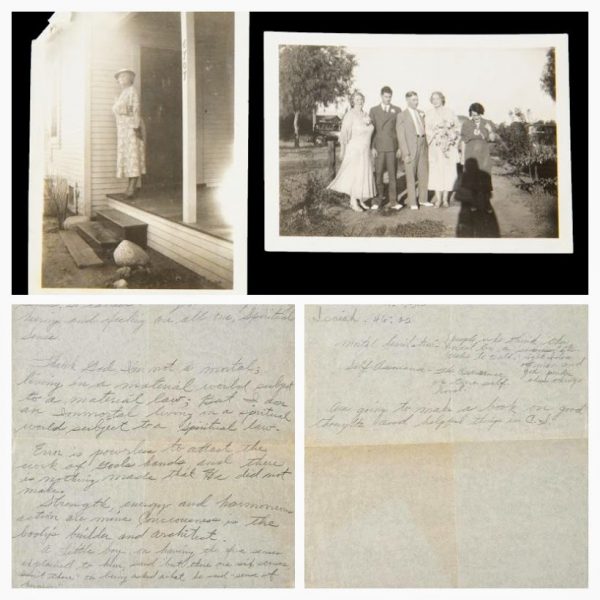
“A set of two snapshots taken circa 1942-1944; the first depicts Ana Lower [Grace Goddard’s paternal aunt and sometime guardian of the child Norma Jeane] in front of the house she owned at 6707 Odessa Avenue in Van Nuys, CA, with Norma Jeanes penciled annotation on the verso reading ‘Aunt Ana;’ the second depicts Ana standing next to four others, NJs penciled annotation on the verso reading Taken at Aunt Alices & Uncle / Arts wedding / Aunt Ana, John, U. Art, A. Alice, Opal — interesting to see that NJ did have a family growing up, albeit a non-blood one. And, sold separately, a single sheet of onion skin paper, no date but circa 1944, penciled on the front and back with a number of tenets and quotes about the Christian Science religion such as ‘Thank God I’m not a mortal; / living in a material world subject / to a material law; But I am / an Immortal living in a spiritual / world subject to a spiritual law’ and the like, ending with ‘He who gets much out of Christian Sciences / puts much into it’ and ‘Am going to make a book on good / thoughts and helpful things in C.S.;’ likely an assignment for the young Norma Jeane from her ‘aunt’ Ana Lower who was a strict practitioner of the religion as was Monroe’s mother, as much as she could be.”
Photos SOLD for $437.50; Essay SOLD for $3,200
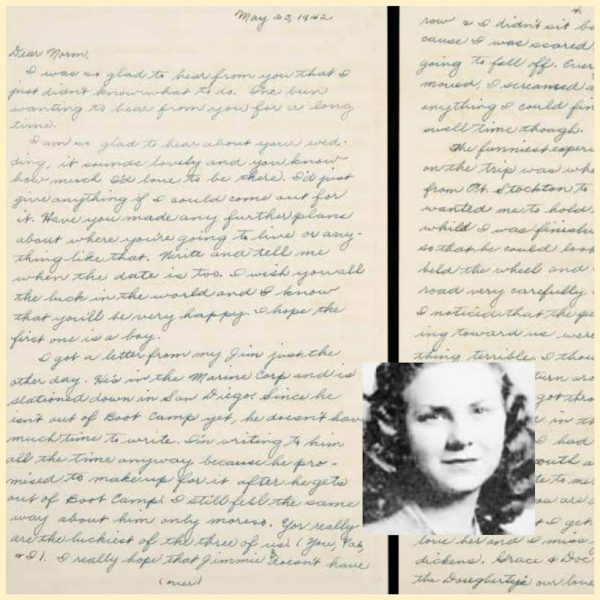
“A two pager on plain stationery, penned in blue fountain pen ink on both sides, addressed to ‘Dear Norm,’ dated ‘May 25, 1942,’ sent to a 15 year-old Norma Jeane from Grace Goddard’s step-daughter, Eleanor ‘Bebe’ Goddard, who had just moved to Virginia; Bebe blathers on about mundane goings-on but does mention NJ’s pending nuptials ‘…I know / that you’ll be very happy. I hope the / first one is a boy,’ and interestingly, she does mention a number of people the two young girls both knew such as Grace [Goddard, NJ’s mother’s best friend and her on-and-off childhood guardian], Enid [Knebelkamp, Grace’s sister], Sam [Knebelkamp, Enid’s second husband], ‘Daddy’ [Ervin Silliman Goddard aka ‘Doc,’ Grace’s third husband], Mrs. Dougherty [Ethel, NJ’s soon to be mother-in-law], and others such as Mrs. Watson, Bub, Diane, and Pat, ending with ‘give the Doughertys our love / Love / Bebe’ — a sweet letter to an unknown teenager who would become world famous less than a decade later.”
SOLD for $640

“A 12 page booklet titled ‘Our Wedding Day‘ noting a 1938 copyright date, on page 7 someone filled in the blank spaces in blue fountain pen ink that related to the event, noting the details ‘Nineteenth / June / 1942 / James Edward Dougherty / of Van Nuys / Norma Jeane Mortenesor [sic] / of Westwood / 432 South Bentley, Westwood / California,’ three witnesses’ names are evident but only one is legible: ‘Marion C. Dougherty,’ brother of the groom, and coincidentally with the same first name as Norma Jeane’s maternal uncle. And sold separately, a snapshot depicting James Dougherty wearing sweats, inscribed in blue fountain pen ink on the verso by his then wife ‘Jimmie in his gym / clothes, also these are the / work clothes of the Physical / Training Instructors. This was / taken at the Catalina Ball / Park where he works.’ (Both items are water damaged.)”
Photo SOLD for $640; wedding card SOLD for $2,812.50

A framed modelling photo of Norma Jeane by Andre De Dienes; and sold seperately, two love letters sent by Norma Jeane to Andre in 1946. The first is on a single page of stationery, no date but circa 1946, penciled on one side in full ‘Darling W.W. [Worry Wart, a nickname NJ gave to De Dienes], I’m writing today / I miss you. I love you with all / my heart and only you;’ and penned in blue fountain pen ink on the other in full ‘Dear Andre, / I’m not doing anything / much except just existing. / Darling there is absoltly [sic] / no one but you. Please / believe me. Absolutly [sic] / absolutely;’ most likely never sent as the then called Norma Jeane was figuring out how to spell the word ‘absolutely’ which she finally got on the last try. The second is penned in black and blue fountain pen ink, dated ‘June 4th, 1946‘ when Norma Jeane had just turned 20 years old, addressed to ‘My Dearest W.W.’ [Worry Wart – a nickname NJ gave to AD], reading in part ‘I’m so much in love with / you, Andre my darling…Don’t worry W.W. I’m being / a good girl. I wouldn’t for / the world be insincere toward / you… / all I / think about is Andre, Andre, / Andre. When will he ever get / here’ — a true love letter penned by a very smitten young girl,” seeming to prove De Dienes’ assertion that the two did indeed have a love affair.
Photo SOLD for $1,280; Letters SOLD for $2,187.50 and $5,625, respectively
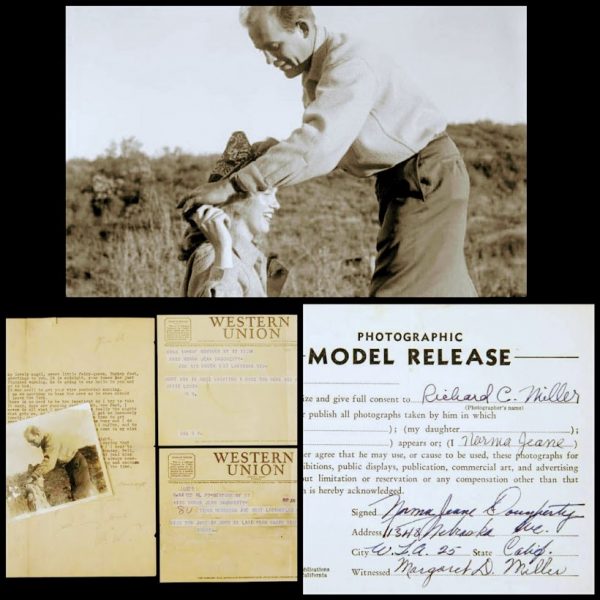
Two telegrams and a love letter from Andre De Dienes, dated 1946-47; together with a snapshot of Norma Jeane and a man described as ‘possibly De Dienes’, but actually another photographer, Richard C. Miller. Sold separately, a 1946 model release form signed by Miller and Norma Jeane.
Correspondence SOLD for $750; model release form SOLD for $8,750
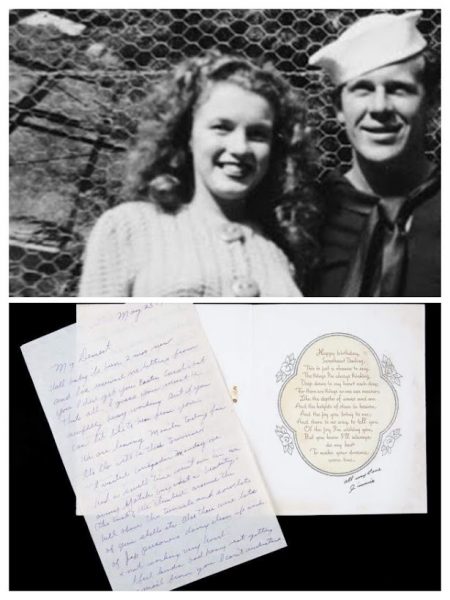
“A set of two letters from Jim Dougherty, then serving abroad in the Merchant Marines; the first on a single sheet of stationery, penned in blue fountain pen ink on both sides, dated ‘May 23, 1946,’ basically imploring his wife to write him, ending with ‘I get Mom’s letters O.K. but none / from you / …P.S. No Mail No Souvenirs,’ signed ‘Love / Jim;’ the second a birthday card probably from the same year as the letter, signed in black fountain pen ink ‘All my Love / Jimmie’ — little did poor Jimmie know he’d be divorced just four months later.”
Letters SOLD for $768
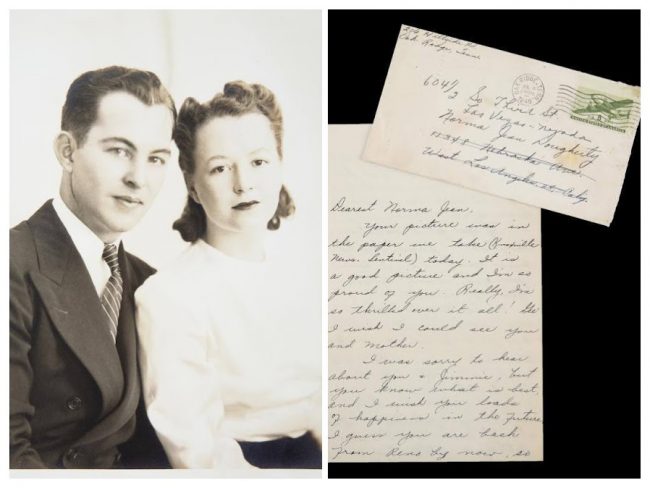
Handwritten letter from Norma Jeane to her half-sister Berniece, undated but from 1943; photo of Berniece with her husband Paris included. And sold separately, a single piece of plain paper, no date but July 1946 by postmark, penned in black fountain pen ink, a newsy letter from Berniece Miracle, sent to Norma Jeane (though Berniece leaves off the final ‘e’), reading in part ‘Your picture was in / the paper…I’m so / proud of you’ and ‘I was sorry to hear / about you & Jimmie,’ ending with ‘Tell Grace & Doc “hello”;’ with its original transmittal envelope addressed to ‘Norma Jean Dougherty’ at her ‘11348 Nebraska Ave’ address in Los Angeles but also addressed to her temporary Las Vegas address where she was staying during her divorce proceedings from James Dougherty.”
Norma Jeane’s letter SOLD for $12,500; Berniece’s letter SOLD for $1,125
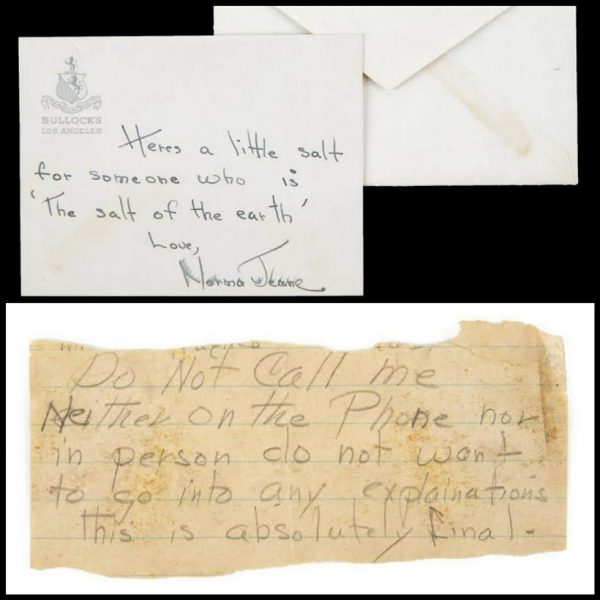
“Two mysterious notes from Norma Jeane (or as she would soon be known, Marilyn), sold separately: firstly, a small gift card from Bullock’s Los Angeles, penned in black fountain pen ink, ‘Heres [sic] a little salt / for someone who is / “The salt of the earth” / Love, / Norma Jeane;’ included with its envelope but it’s not addressed so we’ll never know who NJ bought this gift for or what it was! By contrast, the second is a cryptic handwritten note, penciled on the front side ‘Do Not Call me / Neither on the Phone nor / in person do not want / to go into any explainations [sic] / this is absolutely final.’ — seems like she was breaking it off with some overzealous suitor, but who was it?”
Notes SOLD for $2,560 and $12,500, respectively
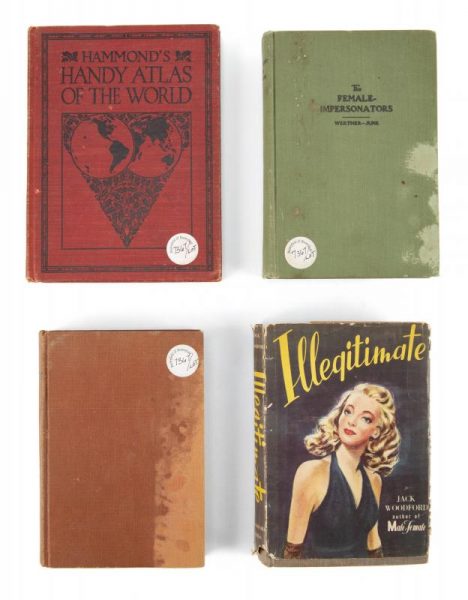
Four books, including three purchased in ‘an obscure Butterfield’s auction’, described as belonging to Norma Jeane and possibly passed on by family members: “1) Hammond’s Handy Atlas of the World by C.S. Hammond & Company, printed in 1933, signed in pencil on the front free end page ‘Hollywood, Cal. / Columbia Studio / Grace McKee / Dec. 29th 1933;’ 2) The Female Impersonators by Ralph Werther, printed in 1922, signed in green fountain pen ink on the front free end paper ‘Property of / John G. Eley M.D. / Fellow College of Phys / Physo-Gyn-Diseases;’ 3) Male and Female by Jack Woodford, printed in 1946; and 4) Illegitimate by Jack Woodford, printed in 1946, with dust jacket.” [John Eley was the bigamous third husband of Norma Jeane’s mother Gladys.]
SOLD for $2,500
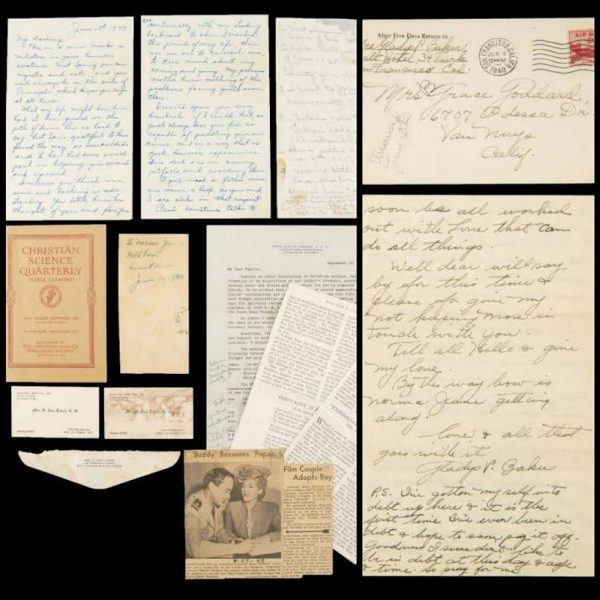
“A group of eight pieces given to Norma Jeane during her childhood by her beloved guardian. ‘Aunt Ana’ Lower including: 1) a partial two page letter penned by Lower in blue fountain pen ink to ‘My darling,’ dated ‘June 1st 1947’ [NJ’s 21st birthday], reading in part ‘A girl needs a father, mine / was never a help, so you and / I are alike in that respect,’ last pages now missing; 2) a single sheet of paper with notes penciled by Grace Goddard [Lower’s niece] about the history of her friend’s [Gladys Baker, though she’s never mentioned] mental breakdowns from 1935 to the early 1950s; 3) a prayer card inscribed on the verso by Lower in blue fountain pen ink ‘To Norma Jeane / With love / Aunt Ana / June 10, 1940;’ 4) a 1947 Christian Science pamphlet; 5) a 1947 schedule for a Christian Science meeting; 6) two pages removed from a prayer book; 7) two of Ana Lower’s business cards plus an envelope flap printed with her name and famous address of ‘11348 Nebraska Avenue / West Los Angeles, 25, California;’ and 8) a 1943 newspaper clipping about Mary Pickford adopting a son. And sold separately, a letter from Gladys Baker, dated ‘May 30, 1948,’ addressed to ‘Grace and all’ [Goddard, Gladys’ best friend and Norma Jeane’s on-and-off guardian], a newsy yet somewhat sad letter written to her old friend, Gladys references how she’s in debt for the first time in her life and how she hates it, she further writes ‘…why didn’t / you let me know of / Aunt Ana’s passing away? / Didn’t you have my address? / Or what?!’, and then she briefly mentions her daughter as an afterthought (even though NJ’s 22nd birthday was just two days away) with ‘By the way how is / Norma Jeane getting / along(?)’ Gladys oddly signs off as ‘Gladys V. Baker’ as if Grace wouldn’t know who she was if she had just written her first name; included with its original transmittal envelope addressed to Grace at her Van Nuys address and coincidentally with a postmark of ‘June 1, 1948.'”
Anna’s correspondence SOLD for $896; Gladys’ letter SOLD for $768

“A single page of small lined notebook paper, with penciled scribblings by Marilyn, reading in full ‘We can only / merge spiritually / never physically – no matter / contact your partner / focus your look / your thought on the partner;’ evidently some musings on her religion; also included is a small black and white cheesecake photograph of MM.”
SOLD for $576
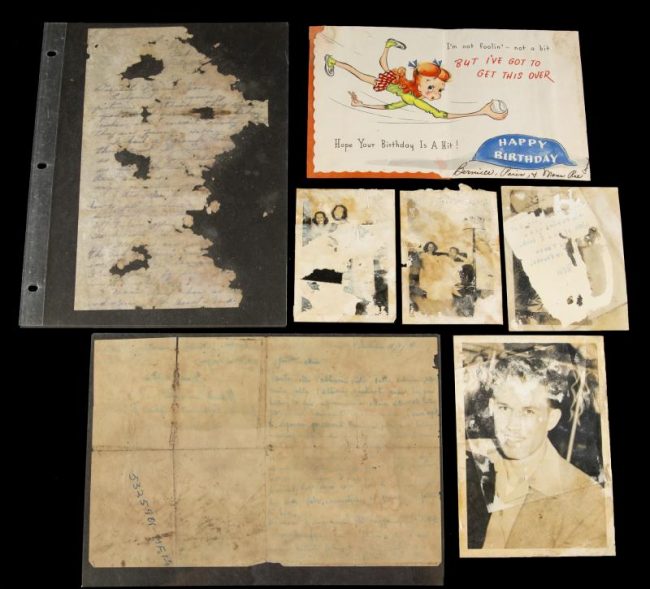
“A small group of seven items all sent to Norma Jeane/Marilyn ranging in date from the mid-1940s to about 1952, though sadly all are severely water damaged; including: 1) a two page letter handwritten in blue fountain pen ink from her half-sister Berniece Miracle; 2) a birthday card also from her sister; 3) a black and white snapshot of Berniece and her daughter, Mona Rae; 4) a black and white snapshot of Berniece and her husband, Paris Miracle; 5) a black and white snapshot of a good-looking young man; 6) a completely damaged black and white snapshot with a partial inscription on the verso reading in part ‘Bill;’ and 7) an early 1947 fan letter sent to MM at 20th Century Fox from someone in Italy.”
SOLD for $384
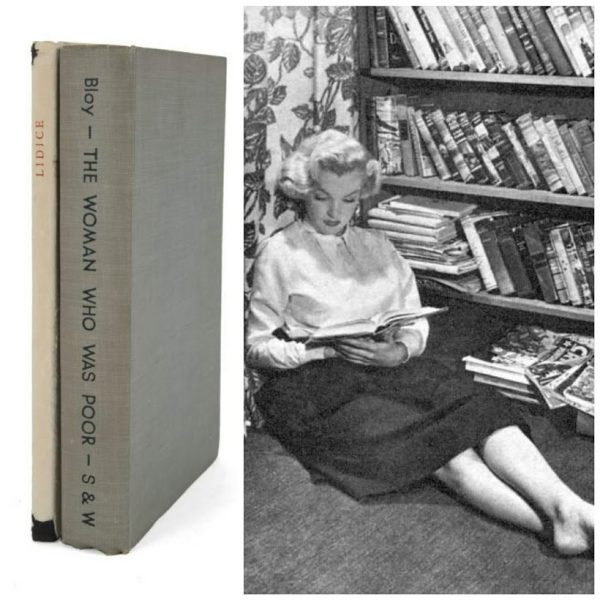
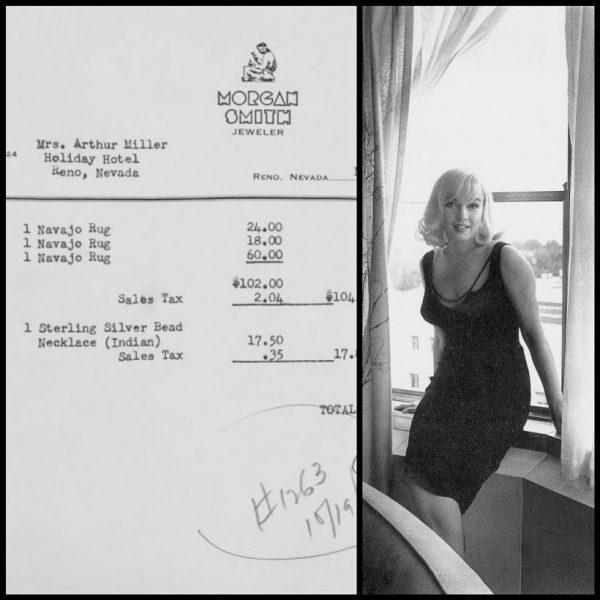
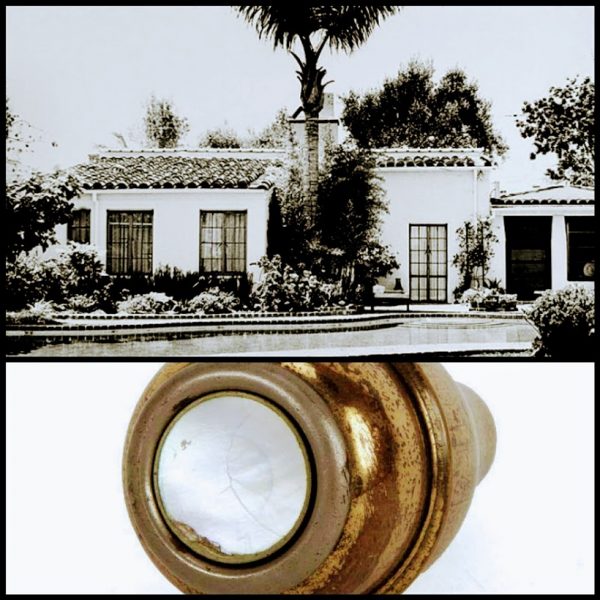
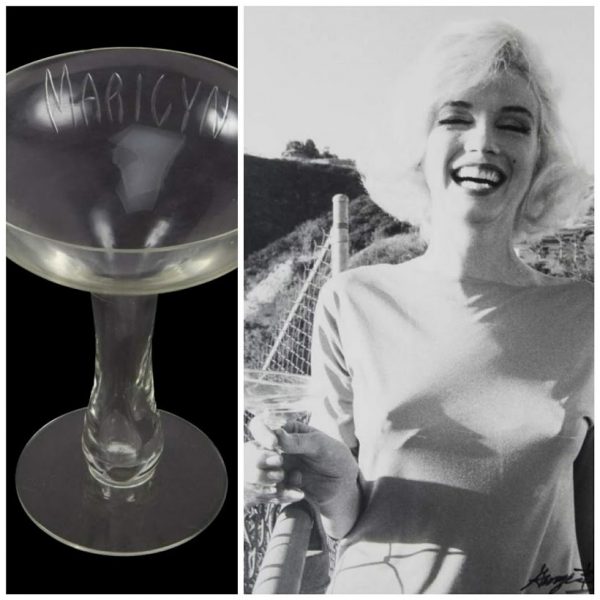
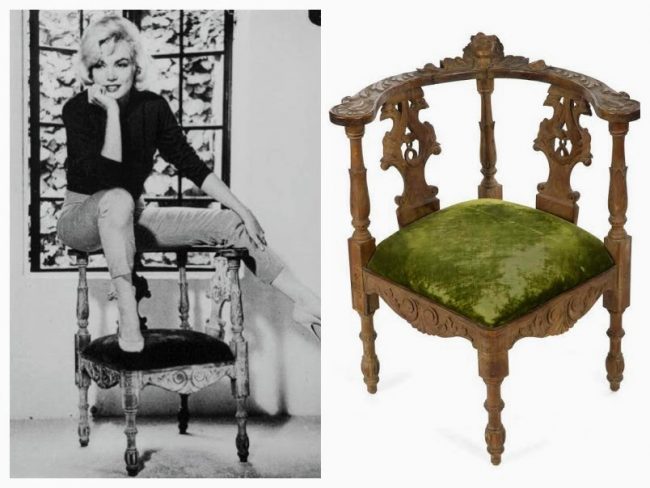
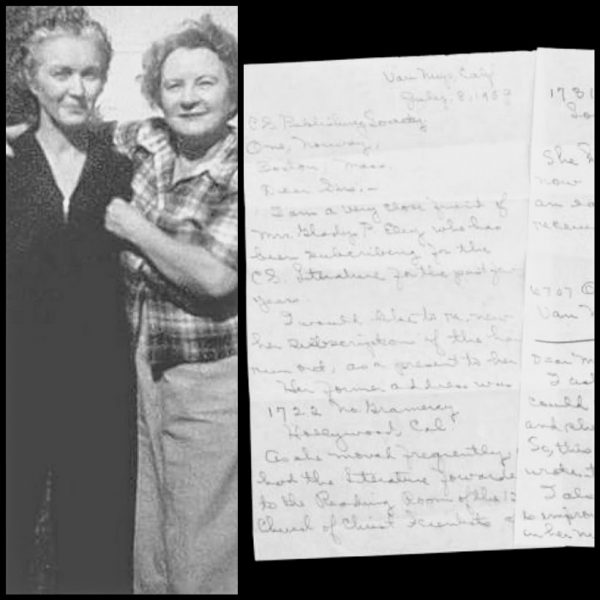

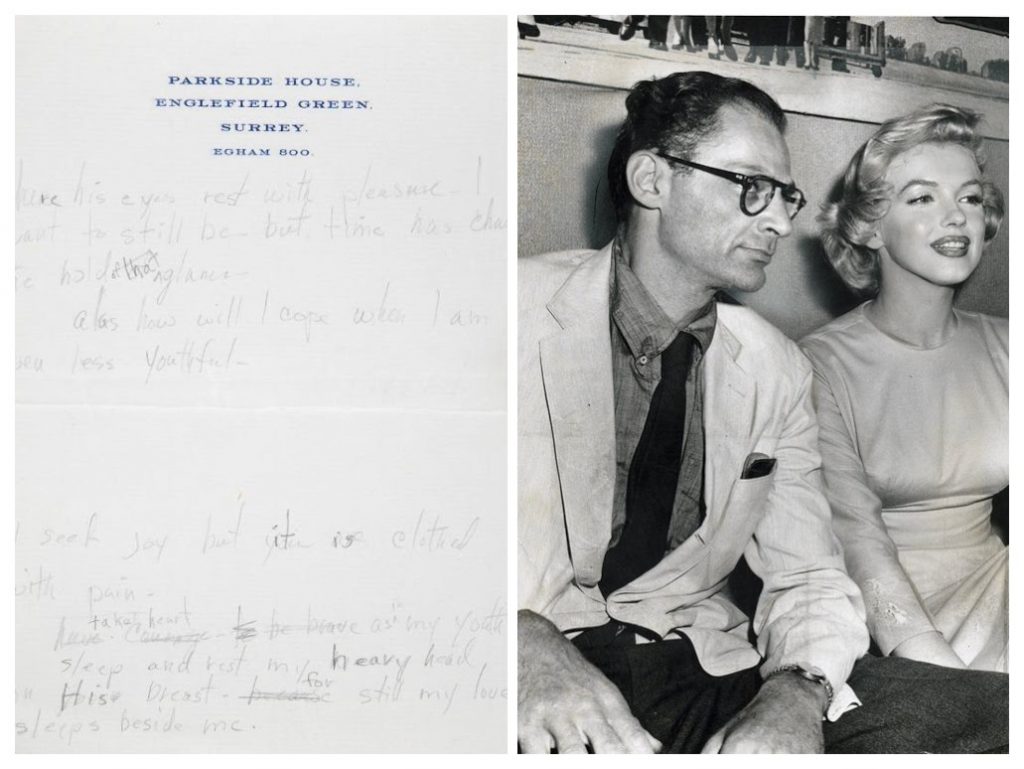
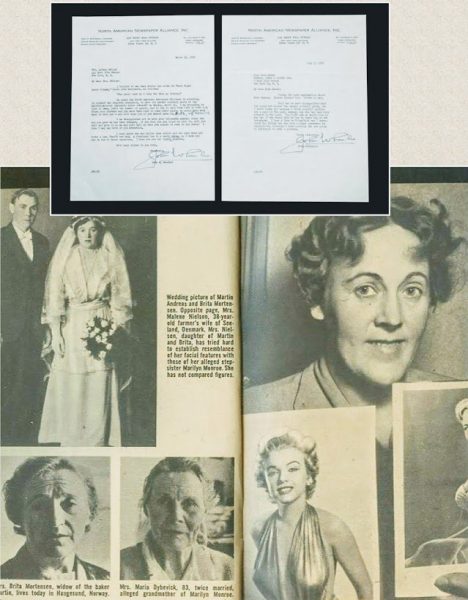
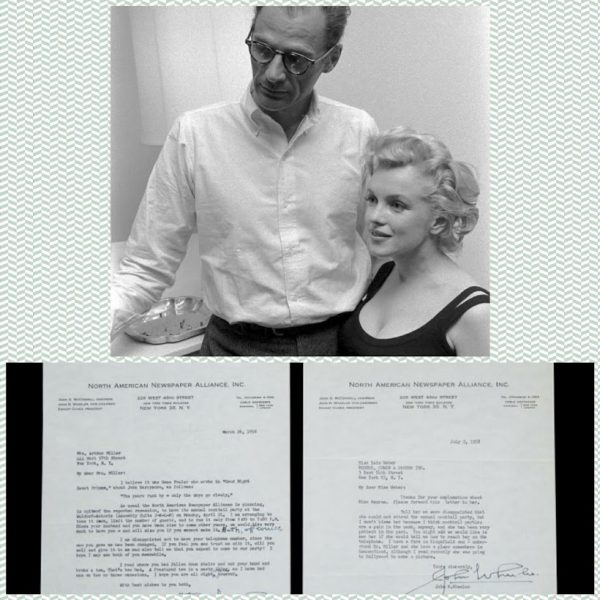

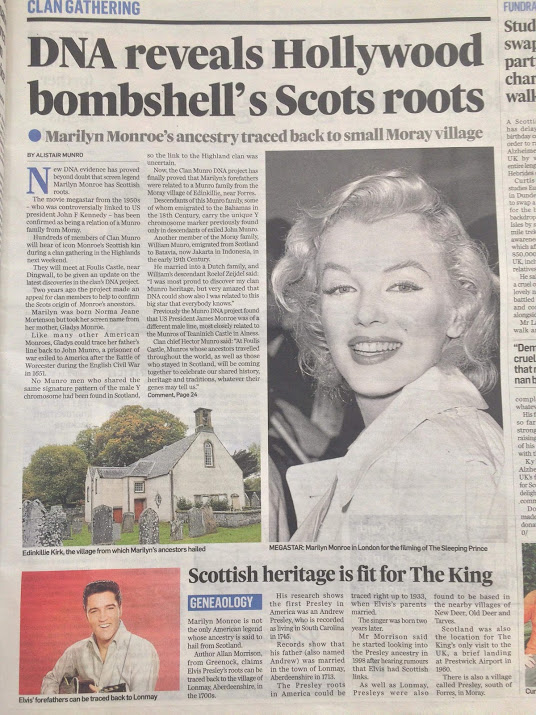

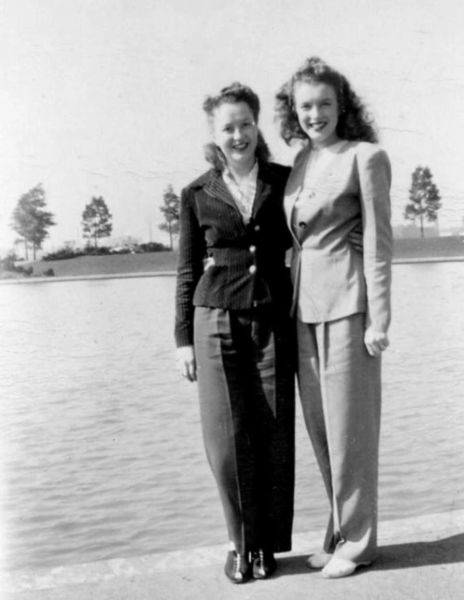


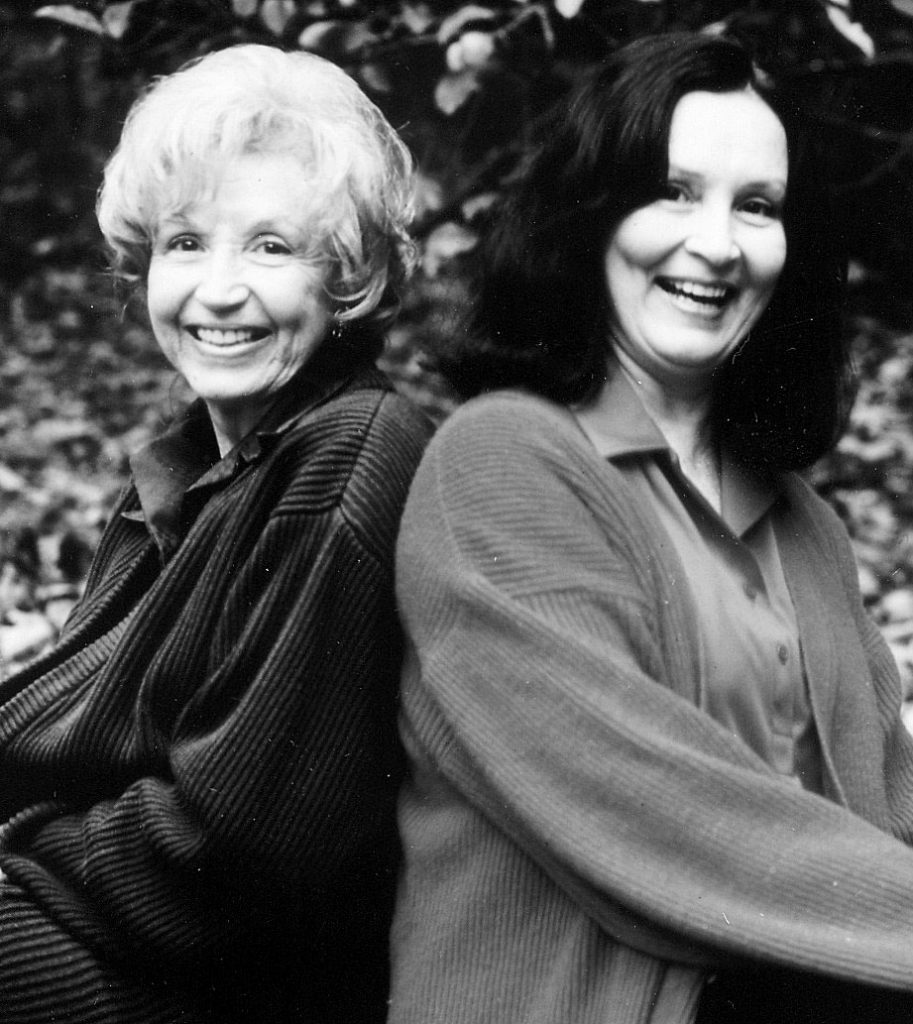
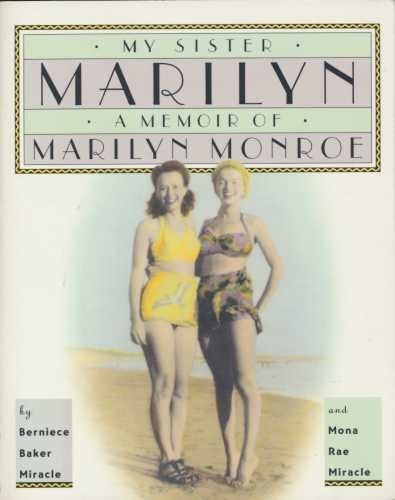
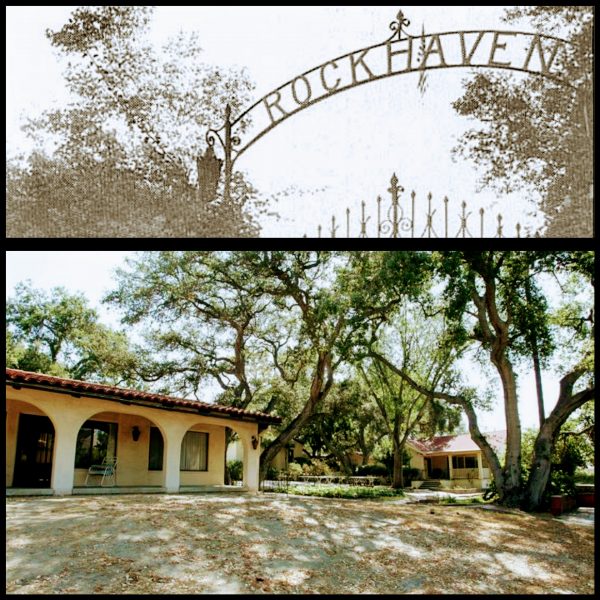

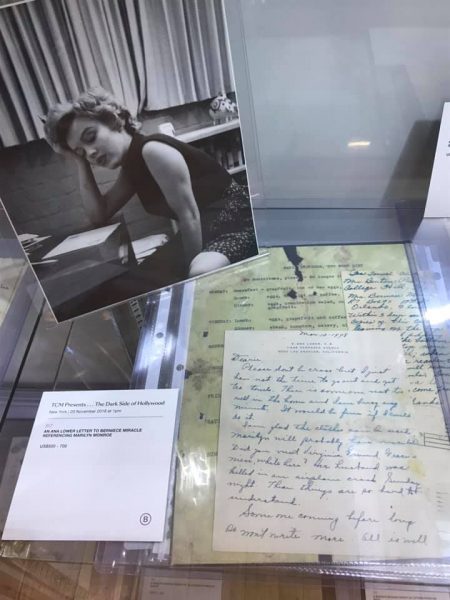
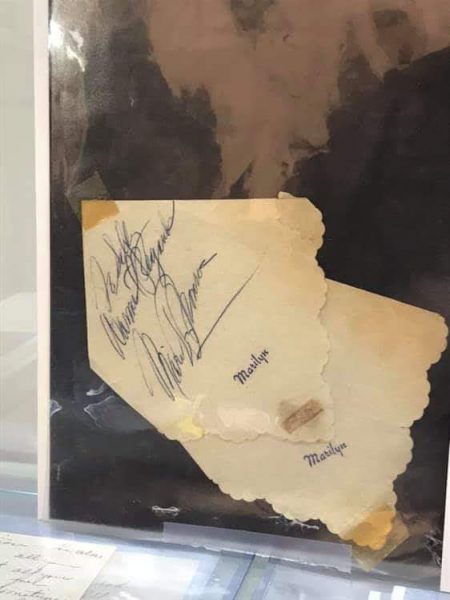
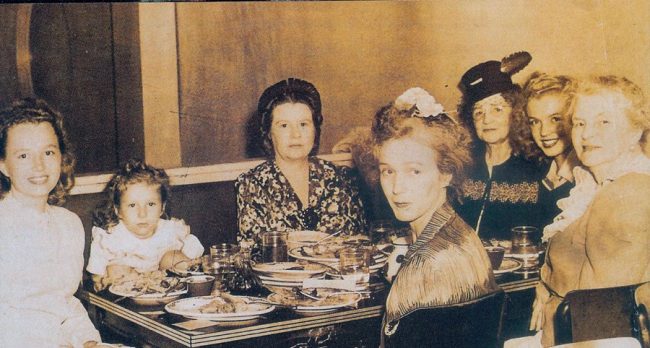

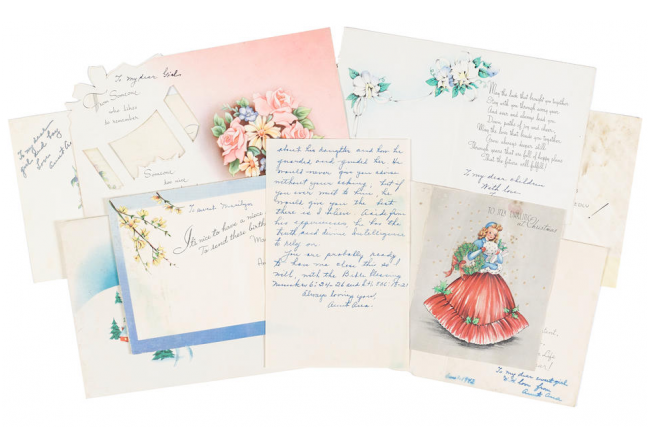
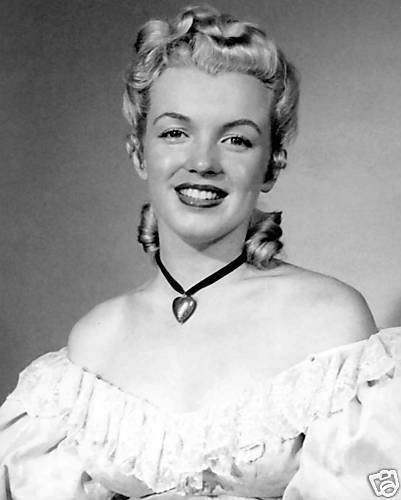
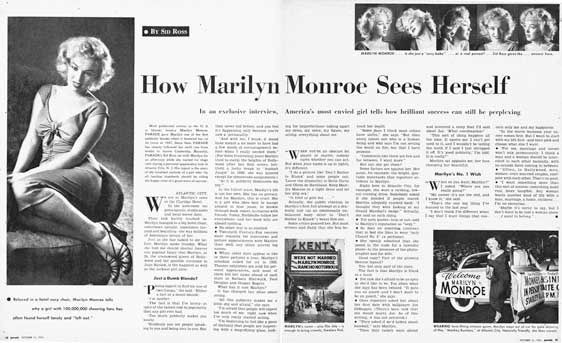
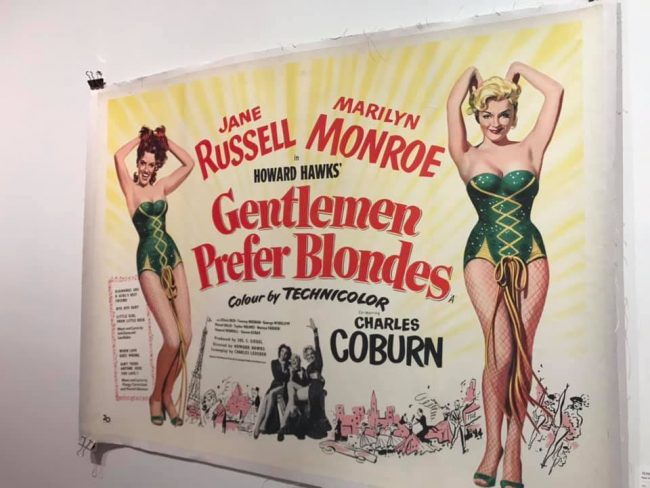
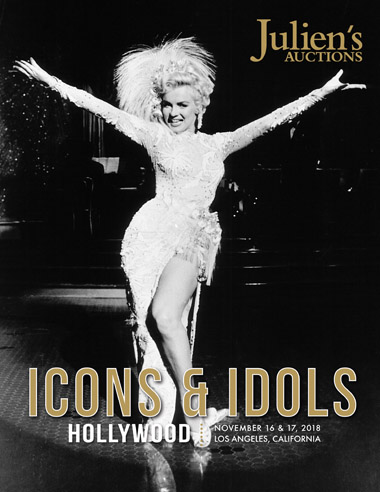
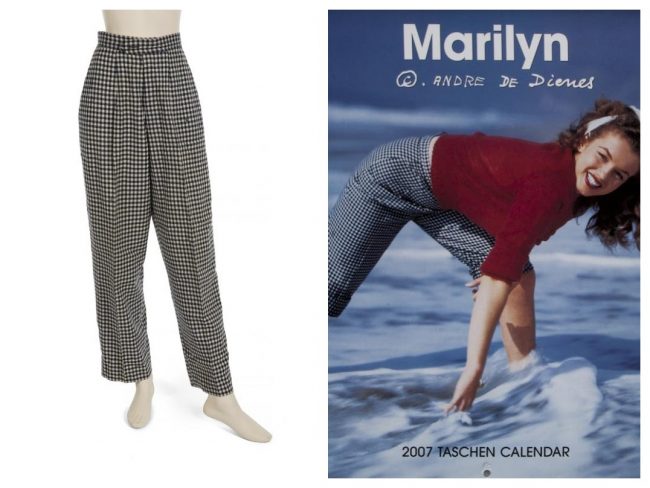
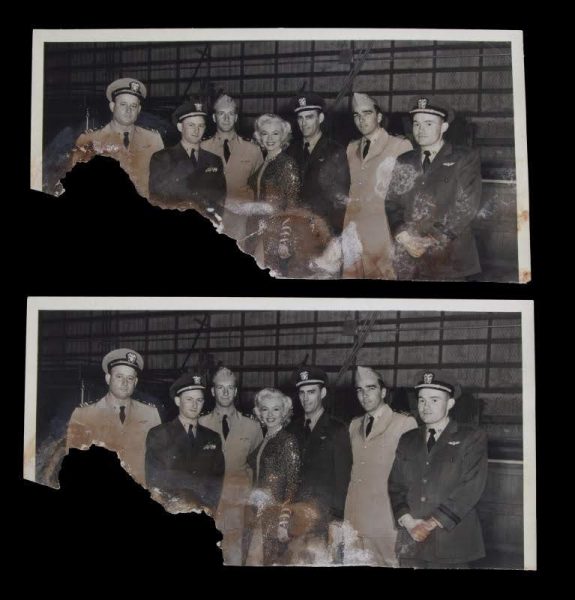
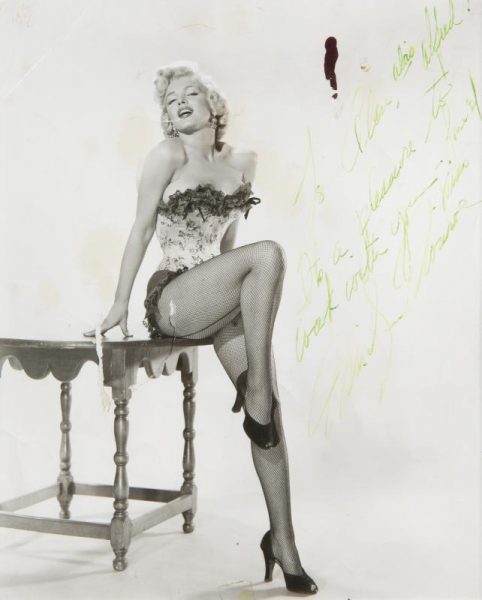
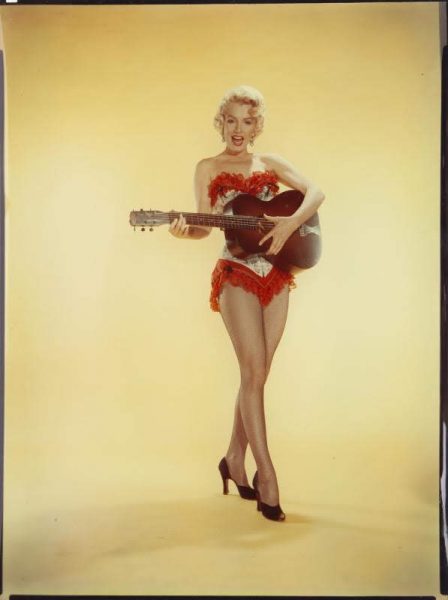
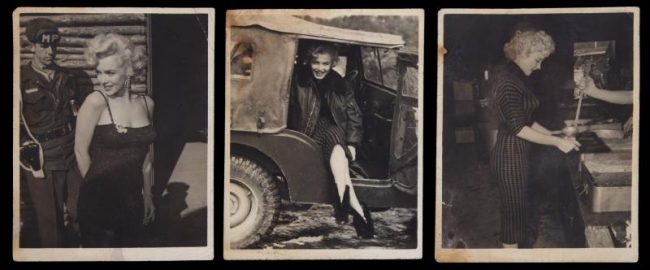
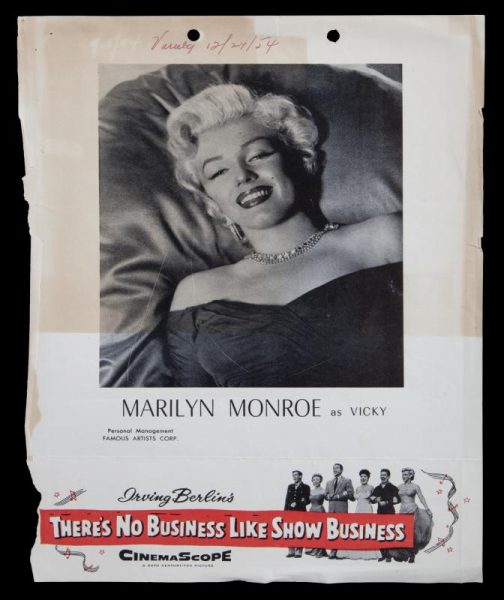
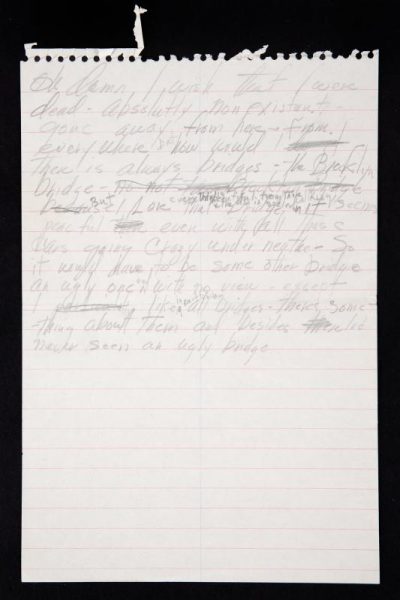
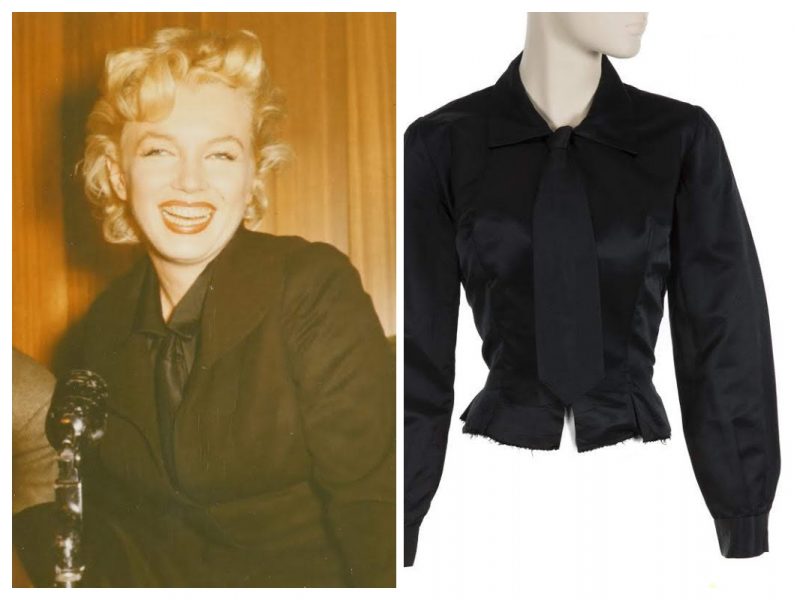
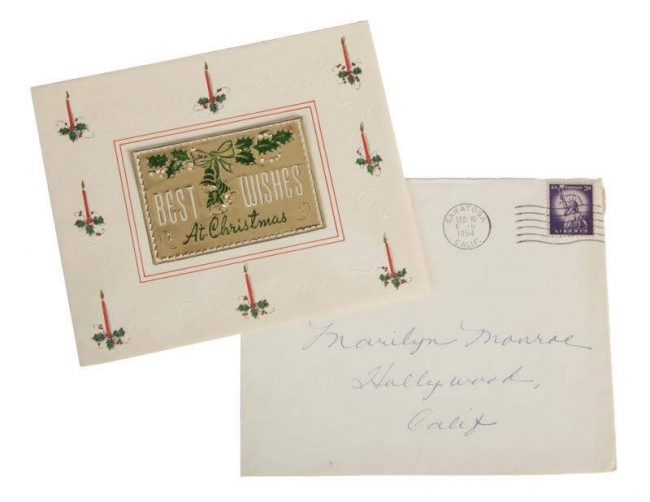 Among Marilyn’s correspondence with fellow celebrities was a Christmas card from
Among Marilyn’s correspondence with fellow celebrities was a Christmas card from 
